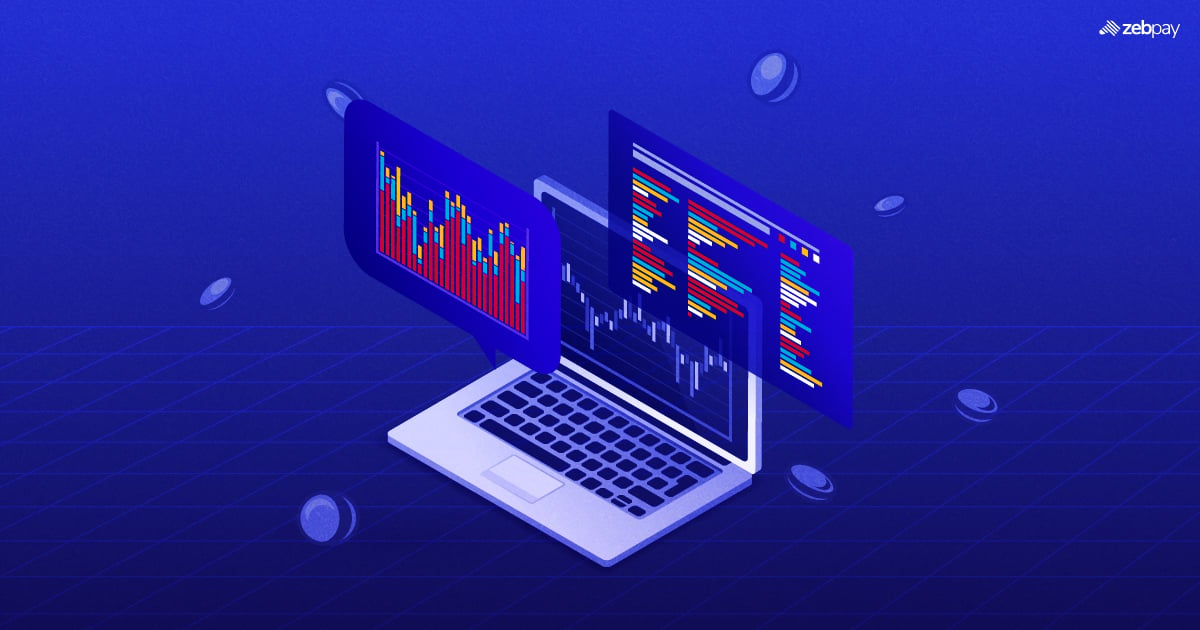Trading in Crypto markets requires a clear understanding of various indicators and tools. Understanding the best trading indicators can simplify the decision-making process of all the traders, either experienced or not. In today’s blog, we will go through the seven top trading indicators that are useful to traders in the crypto community.
Which indicator is best for trading?
One of the most repetitive questions asked is “Which indicator is the best and how should it be used?” The truth is, that the answer to the question could be subjective for each trader. Multiple factors, such as market conditions, trading style, and personal preferences decide the indicator that needs to be used by the traders. However, each indicator has its specific purpose and can be valuable in different market conditions. The solution is to understand how each indicator works and when it needs to be used in your trading strategy.
Top 7 Trading Indicators
Moving Averages
Moving averages is a Classic Indicator that is used widely and is the oldest technical indicator in trading. Moving Average (MA) is more of a technical analysis indicator as it helps the traders easily understand the price action by filtering the noise caused by random prices. Moving averages identify trends, potential support and resistance levels, and turning points in the market that help the trader make a better decision. The crossover of short-term and long-term moving averages is used to signal potential buy or sell opportunities for the traders.
Relative Strength Index (RSI):
Relative Strength Index (RSI) measures the change and its speed in price movement. It has a range of 0 to 100 which understands and identifies the overbought and oversold conditions in the market. RSI is regularly used by traders to predict potential price movements. When the RSI surpasses 70, it suggests that an asset may be overbought and due for a correction. Conversely, when it drops below 30, it indicates oversold conditions.
Bollinger Bands
Bollinger Bands makes the trader ride a “Wave of Volatility” in the market. Bollinger Bands consist of a simple moving average (SMA) and two standard deviations plotted above and below it. These bands widen during periods of high volatility and narrow down during calmer market conditions. With the help of these bands, traders understand potential breakout levels based on market volatility. Periods of high and low market volatility have been identified after particularly using Bollinger Brand.
Stochastic Oscillator
The stochastic Oscillator identifies Overbought and Oversold Conditions by the traders. The Stochastic Oscillator compares the closing price of an asset with its price range over time. Traders use the stochastic oscillator to anticipate potential price trends.
Fibonacci retracement: predicting price levels
Fibonacci retracement levels are based on the Fibonacci sequence. They are used to identify potential support and resistance levels in the market. Investors raise Fibonacci retracement levels from low to high (in an uptrend) or high to low (in a downtrend) to anticipate possible price moves before a trend reversal.
Volume: Confirmation of Price Changes
Volume is the number of orders or contracts traded over some time. Traders use it to confirm price changes. For example, volume growth during a price gap indicates a strong directional sentiment and reinforces a breakout. Traders can use volume and other indicators to understand trend strength or potential reversals.
Choosing the best trading indicator for you
There is no single way to choose trading indicators. Traders should consider their trading style, risk tolerance, and the characteristics of the markets in which they trade.
Experimenting with different indicators and combinations is important to find the one that suits you best. In addition, factors such as reliability, ease of interpretation, and compatibility with the trading platform should be considered.
Conclusion
Trading indicators are invaluable for analyzing market data and making informed trading decisions. Although no single indicator guarantees success, combining several indicators and performing fundamental and technical analysis can significantly improve the accuracy of your trading signals. Remember to test your strategies, manage risks effectively, and be disciplined in trading. By learning how to use trading indicators, you can improve your trading and achieve your financial goals in the dynamic world of the crypto markets.
If you found this blog useful, share it with other like-minded crypto enthusiasts. Click on the button below to begin your crypto trading journey using ZebPay.







